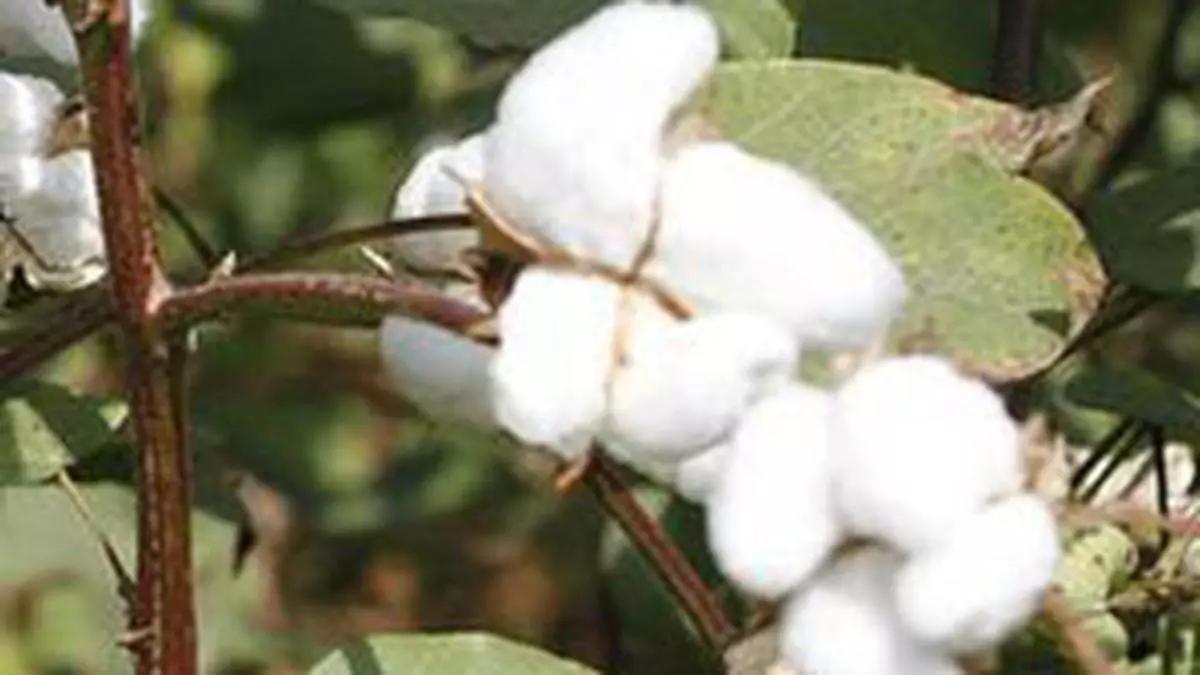Global cotton prices headed lower on hopes of higher US crop
Global cotton prices are headed lower on expectations that the crop in the US in the 2024-25 season beginning August 1 will likely be higher along with Brazil and Turkey, traders and analysts have said.
“A bearish sentiment in the (global cotton) market has largely been driven by improved expectations for output in 2024-25, particularly in the US,” said research agency BMI, a unit of Fitch Solutions.
According to the US Department of Agriculture (USDA), cotton production in the US is projected to increase to 16 million bales (20.49 million bales of 170 kg) in 2024-25 season. It has pegged global production next season at 119.05 million US bales (of 217.72 kg each) against 113.57 million bales estimated for the current season.
Higher ending stocks
The USDA expects larger crops in the US, Brazil and Turkey to offset lower crops in China and India. Ending stocks are estimated higher at 80.48 million US bales this season against 80.42 million bales last season. Next season, it is projected to drop to 83.01 million bales as demand is seen rising.
An international trading source said cotton prices have been driven lower since February on the prospects of a huge US crop. In India, this will result in cotton prices ruling stable below ₹60,000 a candy (356 kg), trade sources said.
“Prices are ruling stable in the ₹57,500-59,000/candy range. The decline in prices on the InterContinental Exchange, New York, had helped this trend here,” said Ramanuj Das Boob, a Raichur-based sourcing agent for domestic mills and multinationals and vice-president of All India Cotton Brokers Association.
Price forecast lowered
On ICE, cotton prices had surged to near 101.8 cents a pound (₹69,000/candy) on February 28. Currently, July cotton contracts on ICE are quoting at 75.55 cents (₹51,175).
At Rajkot, prices of Shankar-6, a benchmark for exports, are quoted at ₹57,100 a candy. At the Rajkot agricultural produce market committee yard, the modal price or the rate at which most trades took place for kapas or unprocessed cotton ruled at ₹7,600 a quintal against the minimum support price of ₹6,620. On MCX, July cotton futures were quoted at ₹57,460 a candy.
BMI said it was revising its 2024 average price forecast for second-month ICE-listed cotton futures from 88 cents to 82 cents a pound.
“In the main, cotton prices have come under significant pressure as a result of rising stocks. ICE-certified cotton stocks have risen from 67,576 bales on April 1 to 176,977 bales on April 24, their highest level since February 2017,” the research agency said.
Other bearish signals
Beyond this, the Commitments of Traders report reflects bearish sentiment in the market, showing that the net long position in cotton futures and options dropped to 36,142 contracts on April 16, 2024, down by 24,890 contracts from the 62,032 held on April 9.
“This was the smallest net long position in 11 weeks while the number of standalone short positions were the highest in 12 weeks,” BMI said.
However, Anand Popat, a Rajkot-based trader in cotton, yarn and cotton waste, said there was too much speculation on ICE with strong attempts being made to beat down the prices. “The attempts include increasing certified stocks,” he said.
CCI strategy
One of the reasons for Indian prices to stabilise is that the Cotton Corporation of India (CCI), which procured over 30 lakh bales to ensure prices did not go below the MSP, decided to sell only to spinning mills and not traders.
“This has helped to keep prices on leash here. On their part, multinational trading houses which purchased around 20 lakh bales have offloaded some 15 lakh bales,” Popat said.
Das Boob said domestic prices will likely be stable since arrivals continue to be good even in May, when they are down to a trickle.
Popat said arrivals are currently between 30,000-40,000 bales. “Farmers are still holding stocks,” he said, adding that next season, the Brazil crop could be under threat due to La Nina.
BMI said renewed strength of the dollar has also put pressure on cotton prices and the performance of the global economy will be a significant determinant of demand going forward.
However, some reports said there were signs of demand recovery with USDA weekly export sales rising from the last four-week average to 253,700 US bales.
BMI said Chinese customs data for the first three months of the year shows that increasing imports continue, well above the 2018-22 average and above 2023 values.
